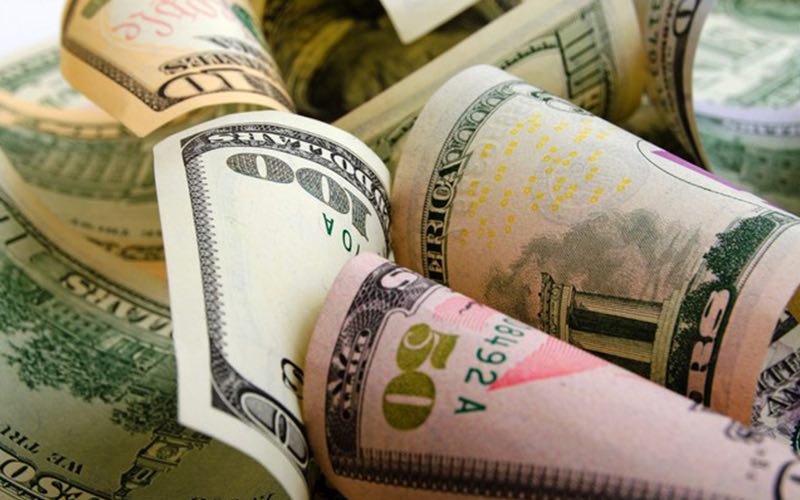The foreign exchange weekly chart hides a mystery: the US dollar is "surrounded but not attacked", and the roadmap for the differentiation of non-US currencies is exposed!
2025-10-25 21:26:02
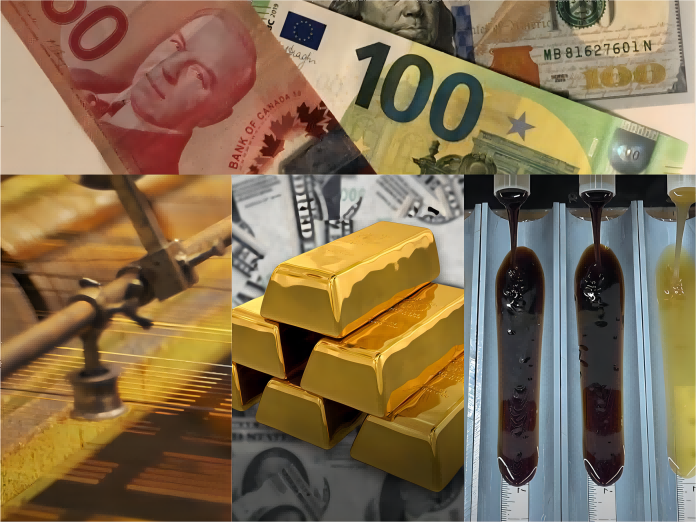
US dollar index: continued to rise at the beginning of the week and closed higher in the later period
The US dollar index has been stable and strengthening this week, continuing its upward momentum from last Friday. While it saw a slight pullback on Monday (October 20th) due to the aftermath of weekend trade news, it rebounded sharply on Tuesday, briefly reaching above 99, a gain of approximately 0.3%. It then entered a narrow range from Wednesday to Friday, hovering between 98.80 and 99.00. It dipped slightly by 0.021% to 98.934 points in late trading on Friday. Despite a brief intraday dip of 0.2%, it still posted a 0.4% gain for the week, demonstrating the dollar's resilience amidst bullish support. Technically, the index has stabilized near its 50-day moving average of 98.50, but significant resistance is seen above 99, potentially testing its short-term bullish momentum.
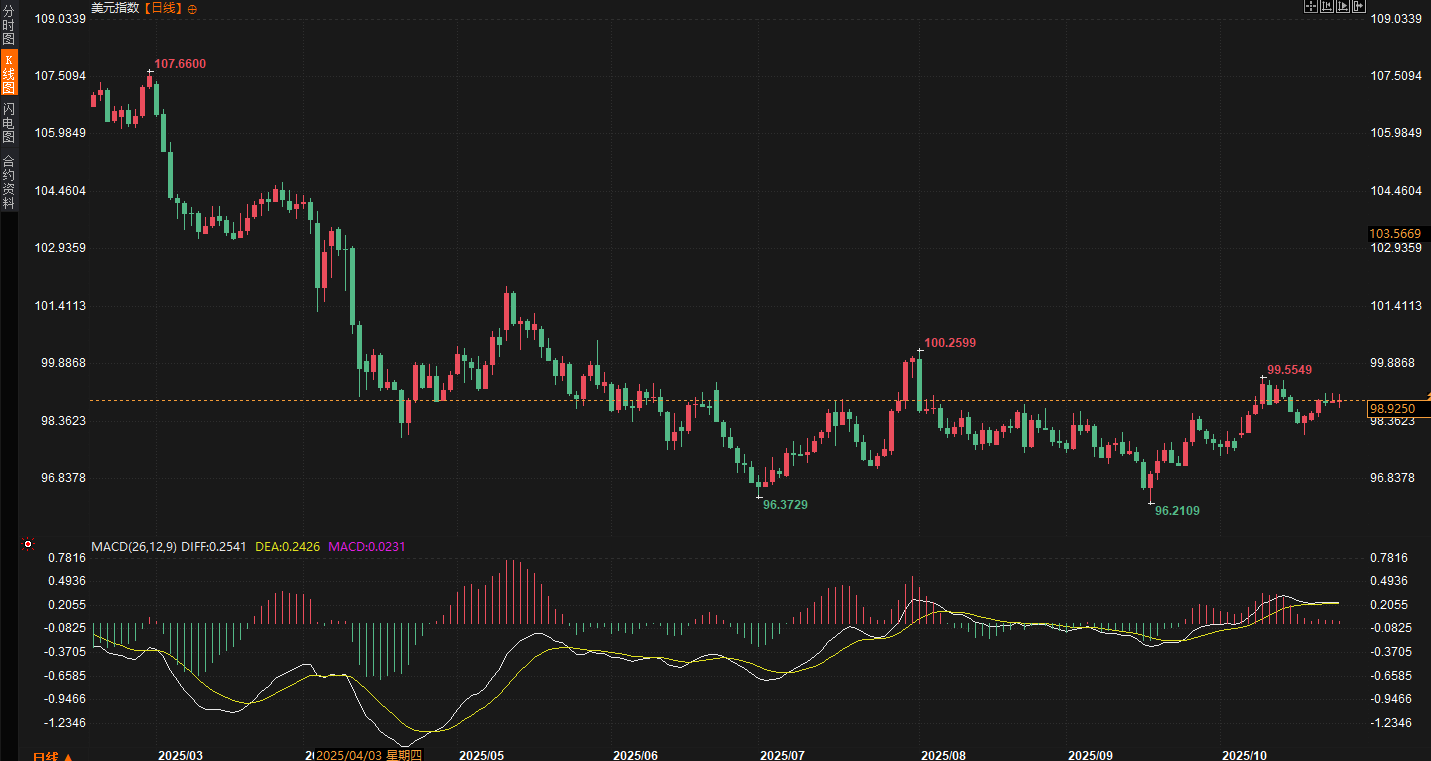
Involved Economic Data and Events <br/>This week, the US dollar's performance was heavily influenced by US economic data and policy events. The Consumer Price Index (CPI) for September, released on Friday, was in focus, rising 0.3% month-over-month and 3.0% year-over-year, below market expectations of 0.4% and 3.1%, respectively, and reinforcing expectations of a Federal Reserve interest rate cut next week. Although the government shutdown delayed some data releases, the CPI report, used by the Social Security Administration to adjust retiree benefit calculations, was released as scheduled. Originally scheduled for October 15th, the delay heightened market concerns about the data's reliability. Furthermore, the Trump administration announced the termination of all trade negotiations with Canada. This move stemmed from an Ontario advertisement quoting a recording of Reagan criticizing tariffs, reigniting concerns about a trade war. From a market sentiment perspective, this escalation in tariff friction triggered safe-haven flows into the US dollar, but also limited the sustainability of gains.
Geopolitically, new US sanctions on two major Russian oil companies pushed up oil prices, indirectly supporting the US dollar as a safe-haven asset. However, the ongoing tensions in the Russia-Ukraine conflict are amplifying market volatility more from a sentiment perspective than from specific supply disruptions. The ongoing government shutdown has slowed the pace of economic data releases, and the Dallas Fed's manufacturing index and consumer confidence index will be in focus next week.
Analyst and Institutional Views
Marc Chandler, chief market strategist at Bannockburn Capital Markets, said the dollar was sold off after the headline CPI data came in weaker than expected, even though the market had already priced in nearly 100% of Fed rate cuts next week and in December before the report.
In its outlook, the U.S. Energy Information Administration (EIA) predicts that the U.S. dollar will benefit in the short term from a clearer path for interest rate cuts, but trade uncertainty could prolong volatility. Morgan Stanley's research team noted that the government shutdown could lead to a lack of fourth-quarter data, with the U.S. dollar index in a neutral range of 98-100 points.
USD/JPY: Five consecutive days of gains approaching 153, policy dovishness exacerbates yen weakness
USD/JPY saw a strong week, rising five consecutive days throughout the week, totaling 1.5% to 152.85 on Friday, reaching a two-week high and approaching the 153 mark. After a slight dip at the opening on Monday, the pair accelerated its gains on Tuesday, rising over 0.8% intraday. The momentum continued on Wednesday and Thursday, briefly breaking through the 152.50 resistance level. Despite a pullback on Friday, the pair held above the 152 mark by the end of trading. Overall, the yen remains under pressure, with the RSI rising to around 65, suggesting a short-term overbought risk, but the bullish trend remains intact.
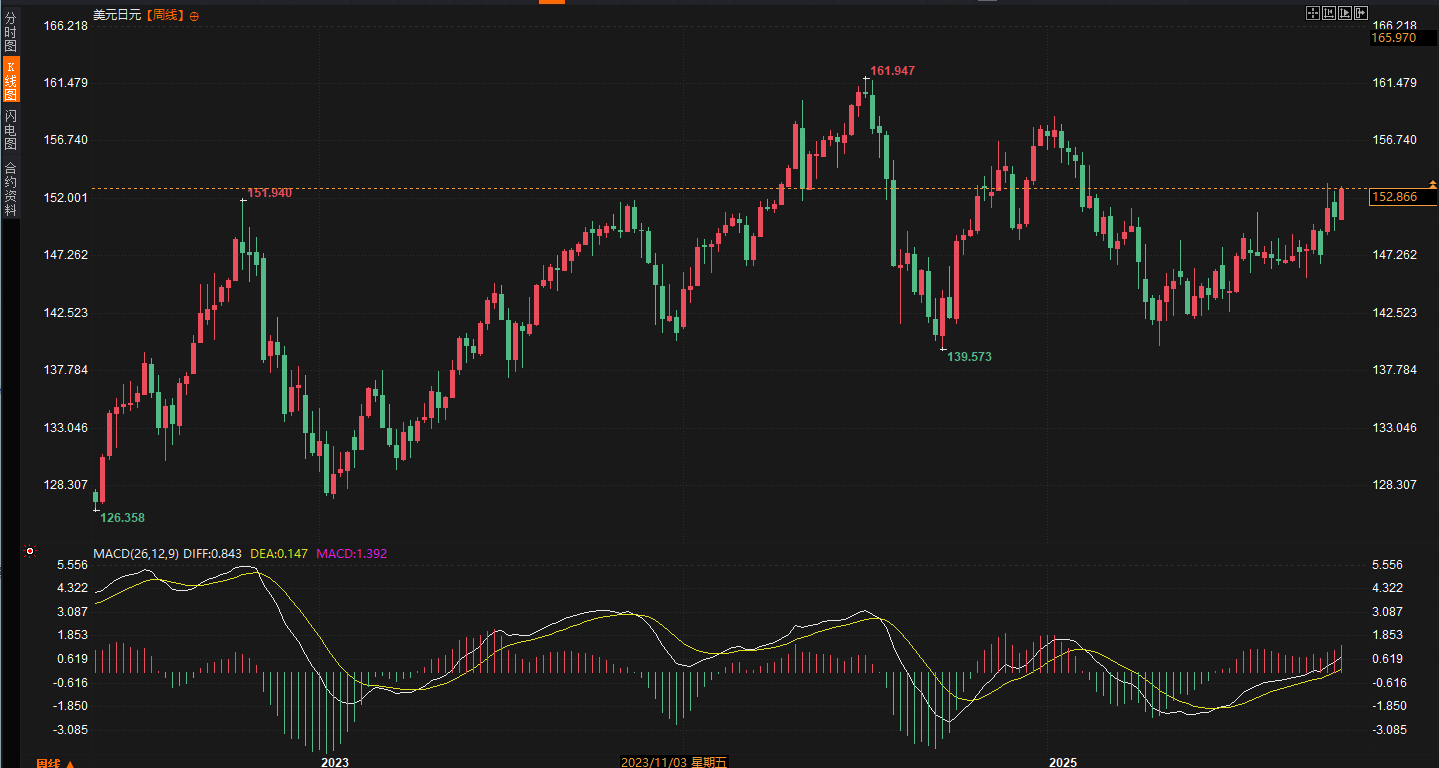
Economic Data and Events <br/>The yen's performance is influenced by both domestic data and external oil price fluctuations. Friday's release of the national core consumer price index (CPI) for September, which rose 2.9% year-on-year, exceeded the Bank of Japan's 2% inflation target and maintained market expectations for a near-term interest rate hike, but failed to reverse the yen's weakness. The policy direction of new Prime Minister Sanae Takaichi, seen as a fiscal and monetary dove, is crucial. On Wednesday, government sources revealed that she is preparing an economic stimulus package that could exceed last year's $92 billion to help Japanese households cope with inflationary pressures, further weakening the yen's appeal.
Among external factors, US sanctions on Russian oil companies have pushed up oil prices, severely damaging oil-import-dependent currencies like the Japanese yen. From a risk-averse perspective, these geopolitical developments are amplifying supply concerns and driving capital outflows from the yen. Furthermore, while the prospect of a summit between US President Donald Trump and US President Donald Trump in South Korea has fueled hopes for a trade easing, the aftermath of the trade war will continue to dominate sentiment in the short term. Next week's Japanese consumer confidence, unemployment rate, and retail sales data will provide further clues.
Analyst and Institutional Views
Ben Bennett, head of Asian investment strategy at L&G Asset Management, said expectations were high for the meeting and the trade situation could ease significantly after the face-to-face interaction.
Analysis from the Bank of Japan (BoJ) suggests that stimulus measures may extend the easing cycle. Goldman Sachs projects a year-end USD/JPY target of 155, citing the dual drag of dovish policies and rising oil prices. UBS Research notes that while the stronger-than-expected CPI supports rate hike bets, the prime minister's stimulus measures will partially offset the impact, leaving the yen weak in the medium term.
USD/GBP: Five consecutive losses drag down the weekly trend, with weak inflation dominating the decline
The US dollar weakened significantly against the British pound this week, falling through Friday, totaling 0.84% to $1.33 on Friday, down 0.15%. Despite a slight rebound on Monday, the dollar turned downward on Tuesday, losing approximately 0.4% on the day. The decline accelerated on Wednesday and Thursday, reaching a low of 1.3250. While it stabilized late Friday, it failed to reverse the downward trend. Technically, the exchange rate fell below its 20-day moving average of 1.3350, and the MACD indicator turned negative, indicating a short-term bearish bias.
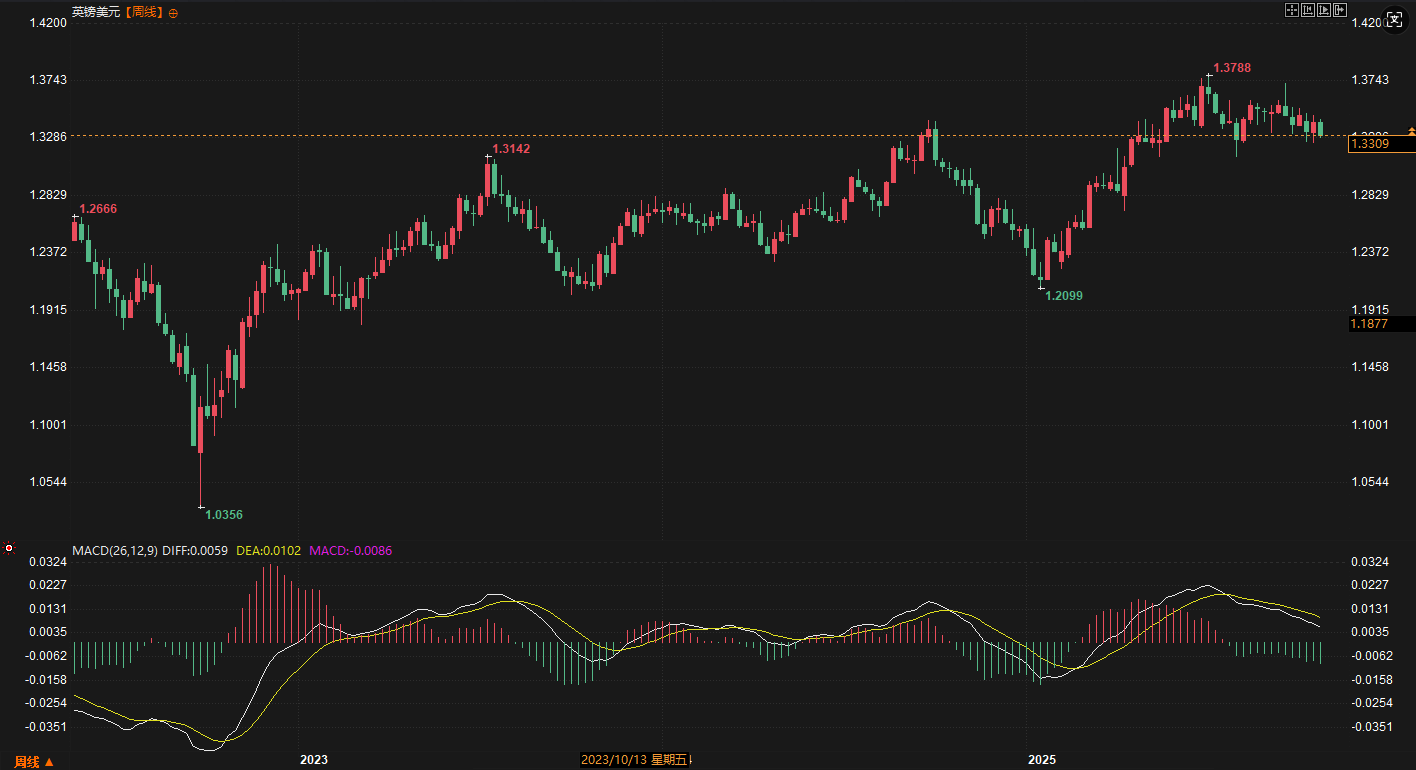
Economic Data and Events <br/>The pound came under pressure primarily due to diverging UK economic data. Stronger-than-expected retail sales data on Friday provided temporary support, but previously released weak inflation data dominated market sentiment, leading investors to increase bets on a Bank of England (BoE) interest rate cut this year. September's month-over-month inflation increase was lower than expected, further fueling expectations of easing. Furthermore, Trump's announcement that he had terminated trade negotiations with Canada triggered a global trade war-like chain reaction, raising concerns that such tariffs would curb UK export growth. This risk-averse sentiment boosted the dollar's relative strength.
Amidst geopolitical tensions, the ongoing conflict between Russia and Ukraine has heightened global risk aversion, but has not directly impacted the British pound. Next week, the UK CBI's distribution sector survey, consumer credit, and mortgage data will be in focus, and speeches by Bank of England officials may further clarify the path forward for interest rate cuts.
Analyst and Institutional Views <br/>Barclays Bank's research team said that although retail sales exceeded expectations, weak inflation dominated and the pound may fall further to 1.30 throughout the year.
JPMorgan analysts noted that the risk of an escalating trade war will prolong the pound's downward cycle and expect the Bank of England to cut interest rates by 25 basis points before the end of the year. Goldman Sachs Global Strategy predicts that USD/GBP's short-term support level is 1.32, but a rebound may occur if signs of trade easing strengthen.
EUR/USD: Slightly lower after falling, services PMI boosts sentiment
The euro experienced increased volatility against the US dollar this week, initially declining before appreciating, resulting in a weekly loss of 0.21%. The euro dipped to a low of 1.1580 on Monday and Tuesday, dragged down by a rebound in the US dollar. The euro reversed course on Wednesday, rising 0.4% on Thursday and 0.06% to $1.163 by the end of Friday. The weekly high reached 1.1650 and the low 1.1580, with the exchange rate fluctuating around the 1.16 level. Technical indicators suggest the exchange rate is holding the key support level of 1.1550, but the dollar's resilience limits any potential upside.
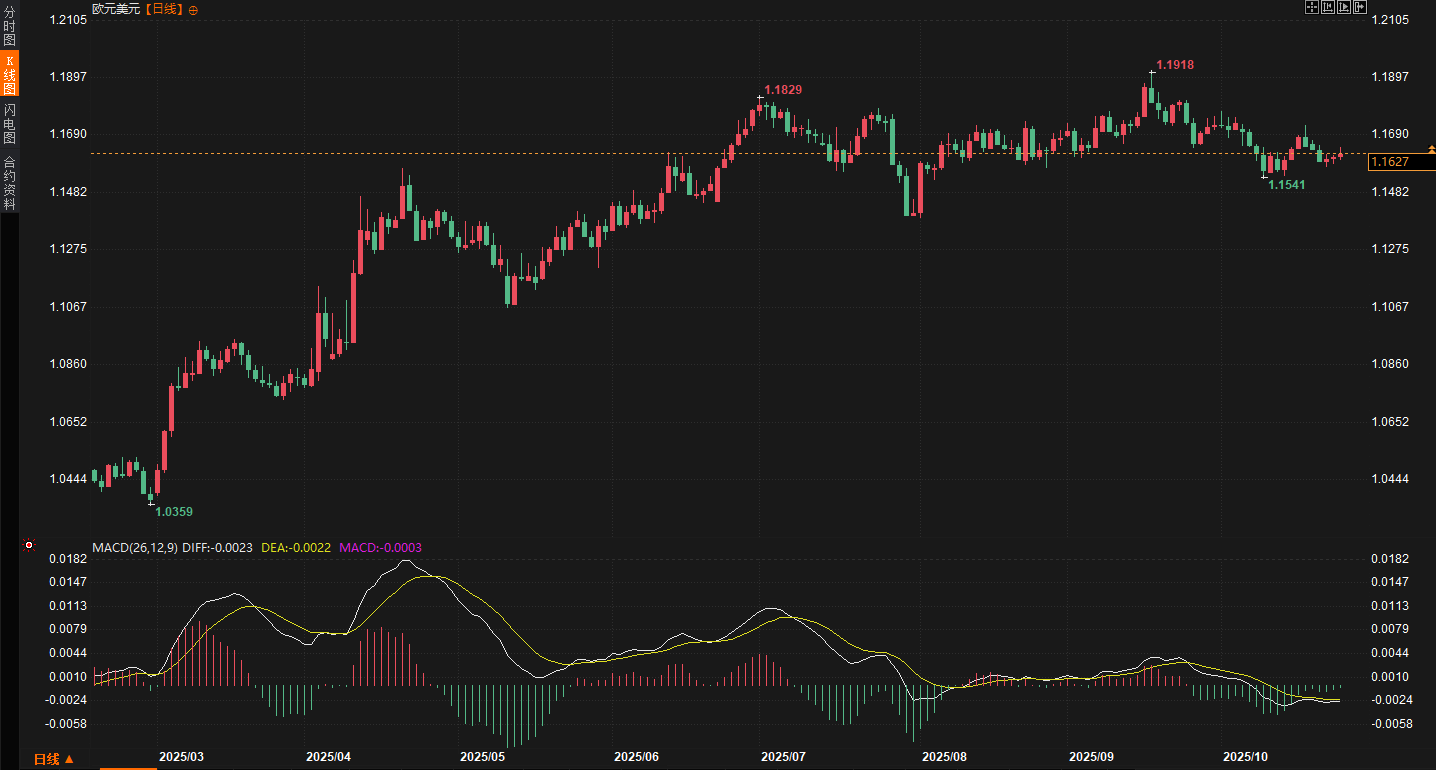
Related Economic Data and Events <br/>The euro's performance is driven by both Eurozone data and trade developments. A survey on Friday showed that Eurozone business activity grew faster than expected in October, driven by the services sector, with the HSS PMI exceeding market forecasts, providing immediate support. However, while weak US CPI inflation was positive for the euro, the Fed's interest rate cut was already fully priced in, preventing further gains. News of the suspension of Trump's trade talks reignited concerns about a tariff war. From a risk-averse market perspective, such events boosted safe-haven demand for the US dollar, weighing on the euro.
Furthermore, the prospect of a leaders' meeting has injected some optimism into the euro, with investors hoping that easing trade tensions will boost eurozone exports. Next week, data such as Germany's Ifo business climate index, the labor market report, and the eurozone unemployment rate and preliminary GDP figures will test the eurozone's resilience. The European Central Bank's (ECB) M3 money supply data and consumer inflation expectations will also be closely watched.
Analyst and Institutional Views <br/>Deutsche Bank's research department said that the better-than-expected services PMI supported the euro's short-term rebound, but trade uncertainties may limit the rise to 1.17.
The Societe Generale team noted that the CPI data reinforces the Federal Reserve's path to rate cuts, which is conducive to the euro's medium- to long-term strength, with a projected year-end target of 1.18. Barclays analysts predict that a solid GDP data next week could push the euro to test resistance at 1.1650.
Weekend Outlook: Trade meetings and central bank developments in focus
The key focus in the foreign exchange market this week was the tussle between trade frictions and inflation data. The Trump administration's escalating tariff war sparked risk aversion, supporting a slight rise in the US dollar index, but weak US CPI data reinforced expectations of rate cuts, limiting gains. The yen, dragged down by dovish policies and oil prices, saw its fifth consecutive rise. The British pound declined due to weak inflation, while the euro's services sector data boosted the dollar's resilience. Looking ahead to next week, if the leaders' meeting signals easing, it could ease risk aversion and drive a rebound in non-US currencies. Conversely, renewed tariff concerns could test the dollar's support at 99. Central bank activity is intensive, with meetings of the Federal Reserve, Bank of Japan, and European Central Bank shaping the market's trajectory. Data releases and official speeches warrant close attention. In the short term, dollar bulls are favored, but volatility risks remain.
- Risk Warning and Disclaimer
- The market involves risk, and trading may not be suitable for all investors. This article is for reference only and does not constitute personal investment advice, nor does it take into account certain users’ specific investment objectives, financial situation, or other needs. Any investment decisions made based on this information are at your own risk.




















